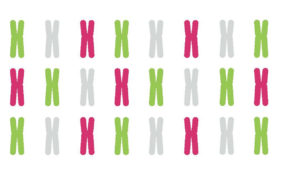It’s 23andMe’s birthday today.
Don’t worry if you didn’t get us something. The best present of all are the stories we hear every day from customers who’ve shared with us how 23andMe has impacted their lives. 
Those never get old.
But we can’t let our 12th anniversary pass without marking a few milestones, and the biggest one starts with a “B,” as in “Billion.”
That is the number of phenotypic data points customers have shared with us for research — actually now more than 1.4 billion — making 23andMe by far the largest research database of genotypic and phenotypic information in the world.
A phenotypic data point is a nerdy way of describing the data from our customers answering questions about things like their health history, ancestry, lifestyle, and traits. It’s this data, along with genotypic data that help inform our research. And each one of those bits of data adds to the power of 23andMe’s unique research engine. It’s that kind of “big data” horsepower that allows scientists here to reveal the biology of rare diseases, and find associations between disease and rare genetic variants, for instance.
This data has also allowed 23andMe to begin developing new types of polygenic risk reports. These will take into account not just a handful or even a few dozen genetic variants associated with a specific condition, but thousands of different variants that each have a small effect but that taken together will more accurately predict a risk.
And this data has allowed 23andMe scientists — often in collaboration with researchers at other institutions — to conduct studies on specific conditions that are consistently the largest of their kind. The largest genome-wide associations studies on major depressive disorder, or Parkinson’s disease or even common traits, for instance.
This gets us to another big milestone, one hundred. That’s the number of papers that have been published by 23andMe and its collaborators on topics as wide-ranging as skin cancer, depression, hair color and autism.
We have a lot to celebrate, but like any 12-year-old we’ve really just begun. We’re looking forward at what is possible when consumers are empowered to explore their own DNA and invited to participate in groundbreaking research.




